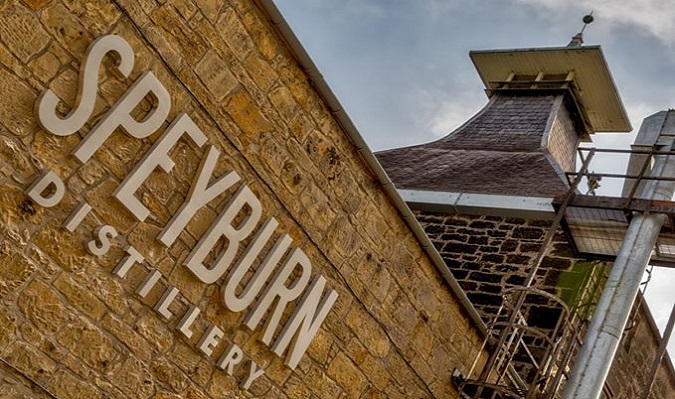SPEYBURN DISTILLERY
Highland Single Malt Scotch Whisky
Tradition and innovation often go hand in hand in the world of single malt, and Speyburn exemplifies this perfectly. Inver House Distillers, Speyburn’s parent company, remains committed to traditional whisky-making methods and has largely preserved the distillery as it was originally designed by Charles Doig.
About
Speyburn’s stillhouse remains unchanged, now equipped with steam-driven stills, and the worm tubs are still in use. This method of condensing, typical of most worm sites, results in a deliberately sulphury new make. Over time in the cask, this transforms to uncover a unique, delicate, and fragrant character underneath, similar to what you find at Knockdhu, Dalwhinnie, and Glenkinchie.
History
Nestled in a small glen opposite Glen Grant, Speyburn began operations in 1897. It was one of several distilleries designed by local architect Charles Doig, known for inventing the distillery pagoda—a signature feature for many. The pagoda was initially built to ventilate the distillery’s kiln. Doig also installed the Highlands’ first ‘pneumatic’ (drum) maltings at Speyburn, which allowed production to exceed the capacity of its malting floors. These drum maltings remained in use until 1968.
Like many other distilleries, Speyburn became part of Scottish Malt Distillers (the malt division of DCL) before being acquired by Inver House in 1991.
In recent years, Speyburn has been promoted as an affordable malt in the US market. While this strategy has led to high sales volumes, it hasn’t boosted the whisky’s reputation. Despite being a top-10 malt brand, it remains largely unknown globally and perhaps under-appreciated in regions where it does sell well.
Highland is the greatest of all whisky regions and provides a huge variety of different flavours and characters. It goes from the lighter whiskies all the way through salty coastal malts.
While malts from the West Highland distilleries tend to have a sweet start and dryish finish, the far North Highland malts character are greatly influenced by the local soil and the coastal location of the distilleries giving light bodied whiskies with a spicy character and a dryish finish, sometimes with a trace of saltiness. Central, Southern and Eastern Highland malt whiskies are generally quite a mixed bunch. Fruity and sweet. They are lighter bodied with a tendency to have a dry finish.
